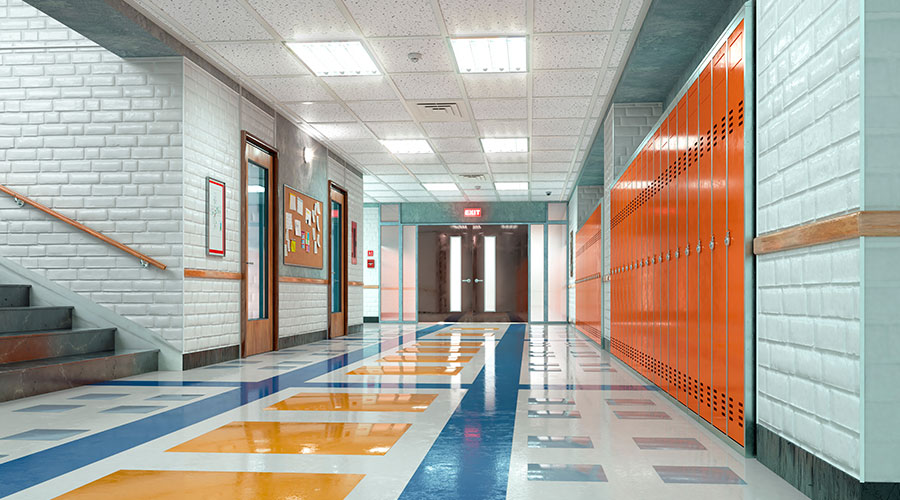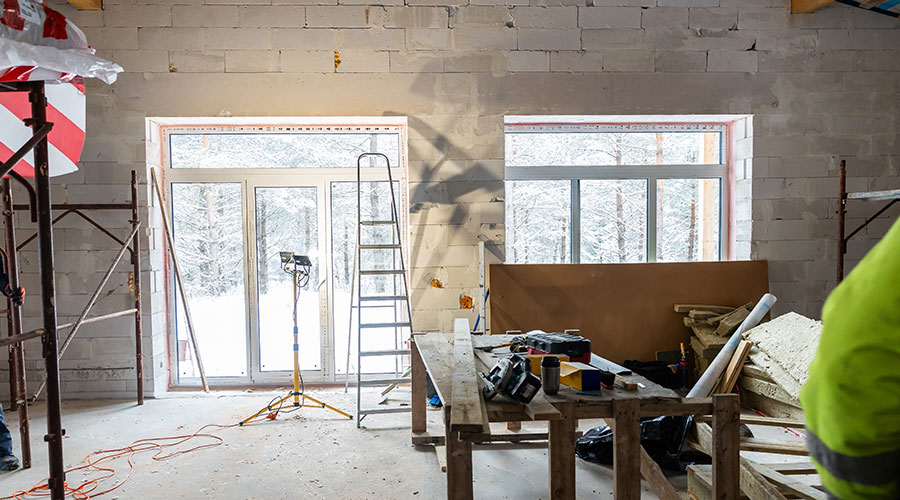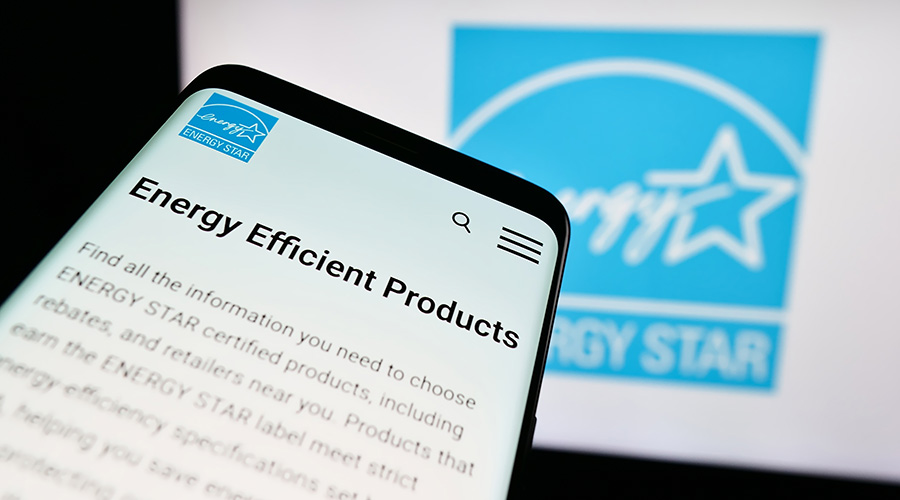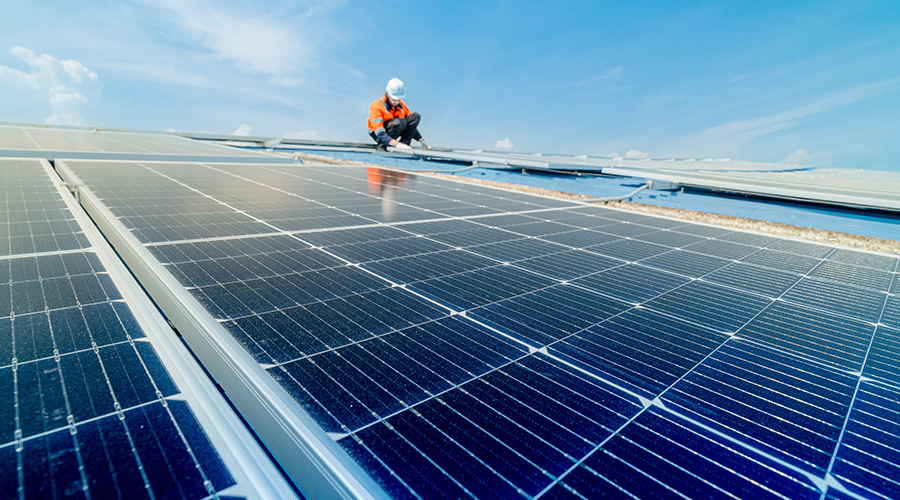Green Developers Break New Ground
Speculative office buildings are beginning to go green. The reason: profits
By Greg Zimmerman, Executive Editor
Real estate transactions aren’t usually headline grabbers — unless they involve some astonishing numbers. Take, for instance, the $144 million profit earned last year on the sale of a 40-story Class A office building at One South Dearborn Street in Chicago. Built for $200 million and sold for $344 million, the sale price set a record per square foot for the Chicago market. Then there’s the $116 million profit earned from the sale of Chicago’s 111 South Wacker Drive. The 51-story Class A tower cost $270 million to build and sold a few months after its completion for $386 million.
Both buildings are in great locations, and they were both practically new when they were sold. But many buildings meet those conditions, and they don’t garner $100 million profits. So what was special about these buildings and why is their sale creating such a buzz? Many think it’s because both buildings are green.
The building at 111 South Wacker was the first speculative office building to be certified at the Gold level with the Leadership in Energy and Environmental Design for Core and Shell (LEED-CS) rating system. One South Dearborn was certified at the Silver level.
The eye-popping profits achieved by these two buildings has stirred excitement in the green building industry. Granted, most facility executives aren’t doing $300 million deals, but as building owners and facility executives are increasingly considering green, these two examples provide weighty evidence for an increasingly recognized justification for green: financial gain.
Still, justifying green is a tricky and nuanced proposition. Whether the project is a high-rise office building, a dormitory or a county courthouse, construction projects are fraught with headaches and hurdles — architect and contractor squabbles, “funding adjustments,” deadline crunches, and post-occupancy problems, to name a few. Justifying green, especially for an organization’s first green building, usually adds one more layer to an already difficult approval process. It means showing where every hard-earned organizational dollar is spent to investors, upper managers, students, civic leaders, stockholders, or anyone else who has a vested interest. And it means showing why these dollars were spent wisely.
Well before shovel meets ground, a first foray into green is often met with a fair amount of skepticism. That’s because green deviates from the normal, “safe,” way an organization has been building for years. Organizations fear unjustified change. And they fear unjustified expenses even more. The perception — and reality, in many cases — is that a green building carries a cost premium.
There are types of organizations — universities, for example — in which green strategies have taken root more quickly than in others. But there’s no doubt that green building is a strategy that is gaining acceptance across a variety of vertical markets. This seems to be a sure sign facility executives in organizations ranging from prestigious Ivy League schools to for-profit developers are consistently finding enough justifications to continue pushing green from niche to mainstream.
“The building sector is usually very static and evolves very slowly,” says Greg Kats, managing principal of cap-e and former director of finance for energy efficiency and renewable energy at the U.S. Department of Energy. “What’s unusual about the green building movement is how quickly it’s grown.”
The Value of Green
It’s important to keep in mind, however, that while green building is gaining acceptance, it’s still a relatively young movement. At present, green buildings account for only about 10 to 15 percent of the overall new construction market. This means that evidence like the profits from the sale of the two Chicago buildings is even more critical to illustrating the business case for green.
“The main justification for green is value,” says Gary Christensen, owner of Christensen Corp., developer of the LEED Platinum-certified Banner Bank Building in Boise, Idaho. “Profit is the difference between the cost of the building and the building’s worth. Capitalization on the savings in operating costs makes the building worth more. Green does increase profit.”
Skeptics aren’t so sure. They point out how difficult it is to know exactly how much green elements influence the value of a building. Proponents for green have an answer, and again, the two Chicago buildings provide evidence. “The skeptics say the profits were because they were better buildings,” says Craig Sheehy, director of property management at Thomas Properties Group. “Green building advocates say ‘exactly.’”
Kats agrees: “Green has become a shorthand way to indicate a quality building. A LEED-certified building is a higher quality building because you’re going through additional steps. There is a lot more whole-building modeling, energy modeling and systems integration. The building is more likely to be built as designed and operated as intended.”
Another financial incentive that could offset a potentially higher first cost is that green buildings may command higher rents in some markets. “We’re starting to see premiums for green in buyers’ markets where there’s a lot of choice,” says Kats. “Green really outperforms non-green in these markets.” But it hasn’t happened everywhere. In Boise, Christensen says he gets the same rent for space in his new LEED-Platinum building as buildings that are 18 to 20 years old. That’s okay for now, though, because he says his operating costs are $3 per square foot less than those older buildings. So he’s still making a profit.
Lease Up
The two Chicago buildings notwithstanding, speculative office buildings have been the area where green as a strategy has been more challenging to justify.
There are many reasons why speculative commercial real estate has lagged. The most oft-cited one is that developers find it difficult to justify departing from a plan and possibly taking on additional expense to construct a building that may be sold soon after it’s built.
“Lots of developers are in a groove,” says Christensen. “They’ve got a machine that works and they’re making money.”
Advocates of green say developers worried about the first-cost premium are not thinking about things in the right way. “The first-cost green premium is really not that much,” says Christensen. “Thinking like that means you’re asking the wrong questions.”
Christensen’s Banner Bank Building was a speculative effort, but as he is fond of saying: “I’m a capitalist, first and foremost.” To Christensen, building green is profitable because there are many ways to justify and get return on investment for the initial “green premium.” One is faster lease-up with better, longer-term tenants.
Developing a green building means exhibiting a commitment not only to the quality of the building itself and the tenants’ experience upon leasing, but also to being a good environmental steward and a good corporate citizen in the community. That strategy increasingly resonates with potential tenants.
Christensen says he’s had several tenants who specifically leased space in his building because it is green— including one company with ISO 14000 certification, a stringent environmental management standard. And here’s another piece of evidence: At the time of its sale, One South Dearborn Street was 93 percent leased. The average vacancy rate for Class A office buildings in the area was around 14 percent.
“We’re getting a lot more data that says tenant recruitment and retention are major justifications for green,” says Kats. “All the research is pointing in the same direction.”
In addition to appealing to tenants’ environmental goals, green buildings may help tenants retain their own employees. Tenants that lease in a green building are giving their employees a better, healthier work environment. This is especially important because competition is growing increasingly fierce for top talent.
Baby Boomers are retiring at a rate much faster than workers with the right skills can fill those positions. That means that top talent has more flexibility to pick and choose employers. “Recruitment and retention of a company’s key people are among the most critical reasons tenants consider green,” says Jerry Yudelson, principal of Yudelson Associates, a green building and marketing consulting firm.
For organizations with workers with asthma or other respiratory issues, a green building is especially attractive. Such organizations will probably be more willing to lease space in a green building proven to have better indoor air quality because those workers will be more likely to stay with the company. Additionally, there is plenty of research that indicates that elements of a green building, such as natural light and good indoor air quality, have a positive effect on worker productivity.
Reasonable minds can disagree about the level to which a green building may affect health and productivity, but many green building advocates are sure there is some positive effect. Sheehy, who manages the LEED Platinum-certified Joe Serna Jr. Cal/EPA building in Sacramento, Calif., offers a good way to make the health and productivity argument: “You can’t quantify productivity, but you can quantify absenteeism, so start with that metric. Productivity can be the tie-breaker argument. Even if you don’t completely buy the argument, you have to have the possibility of significant gains in the back of your mind.”
Despite all this, there is still one rather large caveat to justifying green on the basis of attracting tenants. To any tenant shopping for space, location will always be at the top of its criteria. But green is clearly climbing the list of considerations, and if all things are equal, green may be the tiebreaker.
“I’ll be the first to concede that if you have a building in a great location, you’re going to get tenants and return on investment immediately,” says Yudelson. “But developers are coming around as more companies dedicate themselves to sustainability.”
Managing Risk
Of course, health and productivity arguments are applicable to almost all buildings segments, not just commercial real estate. And so is one more: Green can be a risk management strategy.
Green buildings are usually designed with a comprehensive integrated process. This means that the project team spends more time at the front end of design soliciting input from everyone that will be involved in the project — from the contractor to the mechanical engineer to the building owner. Building systems are designed to interact with each other so that energy savings can be optimized and redundancies avoided. For this reason, green buildings are often called high-performance buildings. An example often used is that if a building is designed with large expanses of exterior glass to make use of natural light, the electricity needs from the building’s artificial lighting may be reduced, saving money. But not only does integrated design optimize a building’s performance, it also anticipates problems. And that’s how green is a risk management strategy: Design irregularities that would cause inefficiencies (or worse) can be corrected before the space is complete.
Additionally, facility executives who want LEED certification are required to have their buildings commissioned as part of the process. Commissioning ensures that building systems work the way they were designed and built, and are as efficient as promised.
Energy efficiency itself is another way green buildings can be justified on the basis of risk management. “There are two elements of risk: high prices and the volatility of prices,” says Kats. While the cost of energy is constantly rising, it’s also constantly fluctuating, making it difficult to budget in markets where facility executives are not locked into a constant rate. By using less energy, facility executives are better able to insulate themselves from the budget crises energy volatility may create. “If you’re not saving at least 50 percent on energy, you’re not even trying,” says Christensen.
Using less energy also means fewer greenhouse gas emissions. By building an energy efficient building, organizations are reducing their carbon footprints. If a carbon cap-and-trade program or a carbon tax is instituted, something many experts see as highly possible in the not-too-distant future, those who occupy green space and are already working on ways to reduce their greenhouse gas emissions may be well-positioned to be in compliance with new regulations. Preemptive action will almost always help the organization save money in the long run.
Community-Minded
Beyond the savings and potential profits, there are other harder-to-quantify justifications for building green. For instance, what’s more PR-friendly for an organization these days than taking environmental steps? When organizations take steps to reduce their carbon footprint, they usually shout it from the rooftop. They want the public to know they are acting responsibly with respect to the community — that they are good corporate citizens. This often attracts customers. Beyond the PR, though, there are tangible advantages for the community as well.
“Many of the benefits that result from a high-performance green building accrue to the community,” says Kats. “For instance, less waste water means delaying or canceling the need for additional wastewater treatment facilities. Adding capacity is very expensive. Similarly, less energy use means fewer power plants and also less smog.”
Many organizations believe that good corporate citizenship is simply the right thing to do — for the community, the environment and the future. Christensen says he shows photos of his grandkids in any presentation he does about his building and talks about how important it is to take care of the environment for future generations. He, and many other facility executives, are realizing that the justifications for green far outweigh the objections. Besides, as Christensen says, “If you can build a building that doesn’t cost more, that eliminates or reduces greenhouse gas emissions, and that takes care of the environment, why wouldn’t you?”
ON CAMPUS
Green and Crimson
For many facility executives, success or failure in justifying green hinges largely on the priorities and values of the organization. Universities, for instance, have been at the forefront of the green movement because they want to show prospective students how much they care about the future. Environmental, health and community justifications for green may carry nearly as much weight as the financial ones. But it also doesn’t hurt that universities are usually willing to accept a longer return on investment than a commercial developer might.
One high-profile example is Harvard University in Cambridge, Mass.
At Harvard, Tom Vautin, associate vice president for facilities and environmental services, and his colleagues helped start the Harvard Green Campus Initiative in 2001 to address how buildings fit into the university’s overall focus on environmental sustainability. The solution Vautin found was LEED. But even with the campus’s commitment to green, Vautin still had to justify this new way to design and construct buildings.
“There was a degree of skepticism,” says Vautin. “It didn’t seem like a bad idea to build green, but people wondered what it really meant.” Essentially, administrators wanted to know how much risk would be introduced and how much more building green would cost.
As the team struggled through the first LEED building, Vautin realized the LEED rating system itself could be used to assuage fears of risk and additional cost. He argued that using the integrated design process that is all but required for a successful LEED project would assure that Harvard was getting a high-performance green building at a cost comparable to traditional construction.
“The LEED process creates a disciplined approach to managing the whole development,” says Vautin. At Harvard, as at most universities, new buildings are expected to last 50 to 100 years. That means a longer return on investment is usually acceptable — up to 10 years for Harvard, in some cases.
With completion of the first LEED building in 2002, Harvard was off and running. “These projects do get easier if you’re building in the right processes to capture the lessons,” says Vautin. Today, 23 Harvard campus buildings are either certified or registered to go through the LEED certification process. Some are new construction; others are renovation projects.
The green building program has been so successful that Harvard created a $12 million revolving interest-free loan fund — the Green Campus Loan Fund — to pay for other sustainable initiatives around campus. The fund pays for the up-front capital, and then the department for which a building was constructed pays the fund back from its operating savings.
“We’ve done about 140 projects in five years,” says Vautin. “It has really raised the level of awareness for sustainability around campus.”
|
GREEN HEALTH CARE
Healthy Grants Help Justify Green
When the numbers were crunched, the project team for the Providence Newberg Medical Center in Newberg, Ore., figured just over half a million dollars was the premium it would have to pay to go green on the new $70.6 million hospital. Unfortunately, the powers-that-be had recently cut funding, and they decided that premium couldn’t be absorbed by the project budget. But the team didn’t give up. Richard Beam, director of energy management services, was tasked with finding the cash from other sources.
Beam got almost $200,000 from the Energy Trust of Oregon through its Building Efficiency Program and $156,0000 from Portland General Electric’s Earth Advantage. He was also able to secure a few smaller grants to cover the cost of an eco-charette and to pay for energy modeling. He received a $15,000 grant for building commissioning from the Northwest Energy Efficiency Alliance. This grant allowed Beam to qualify the hospital for a $141,000 tax credit through a unique program offered by the state of Oregon. The Business Energy Tax Credit program allows non-profits to pass through tax credits to another organization and receive the net present value of them in return.
Overall, he covered a majority of the half-million-dollar premium. With calculator in hand, he went to the CFO and argued that he had made up most of the difference and that the rest would have a very short payback because the new facility’s equipment would save about $178,000 per year in energy costs. The CFO didn’t have a difficult decision to make.
But that wasn’t the end of Beam’s successes. As the facility neared completion, the team realized that it was within a few points of achieving LEED Gold certification — a feat that would make it the first LEED Gold-certified hospital in the United States. The team figured that by purchasing green power for two years, it could get to Gold. Beam returned to the CFO.
“We literally had no money left,” he says. “But on another Providence project, we had received a grant and there was a bit of a windfall. I went to the CFO and actually handed her the windfall check, and then asked if we could take the funds from the windfall and apply them to Newberg. It was a no-brainer.”
But Beam decided against buying 50 percent green power for two years — a strategy that would have garnered the necessary two points to hit the Gold goal. Instead, “we wanted to take a running leap over the bar, so we agreed to buy 100 percent green power for two years.”
Beam says the organization will probably renew the contract when it comes due in June 2008, even with the 1.5-cent-per-kilowatt-hour premium. “If you look at savings we’re capturing, green energy doesn’t really have a premium. We’ll use some of our efficiency dollars to purchase the green power. We’re committed to operating at the highest level of sustainability.”
|
Related Topics:











